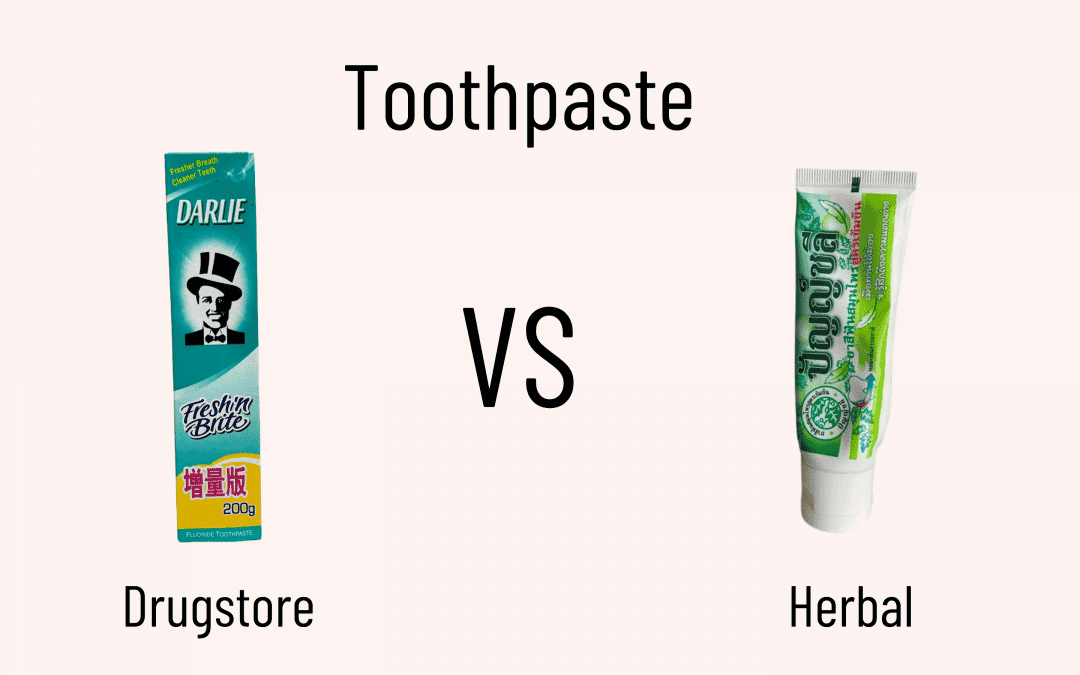Found in your bathroom, toothpaste is a daily commodity for most, if not all of us. You may find it as a tube or in a compact. Lately, more ‘organic,’ ‘herbal,’ or ‘fluoride-free’ toothpaste has entered the market. What does that actually mean?
This article might answer some of your questions and compare the differences between traditional drugstores and herbal toothpaste.
Drugstore Toothpaste vs. Herbal Toothpaste
I stopped brushing my teeth for three days to build up some yellow and ick for this experiment. Then I brushed my teeth twice daily, once in the morning and one before bed (as usual) for 3 days. Then repeat.
Disclaimer! This comparison was a personal experiment, and the results hold no definitives. Results are subject to inconsistencies.
Products and Results
The drugstore toothpaste I am using: Darlie Fresh’n Brite


The herbal toothpaste I am using: Punchalee Thai Herb Toothpaste


Discussion
Both kinds of toothpaste work effectively to keep the breath fresh, clean, and hygienic. And only in the course of 3 days the drugstore toothpaste shows fast whitening results. How is this possible?
According to an article from JPDA, several ingredients work as a whitener.
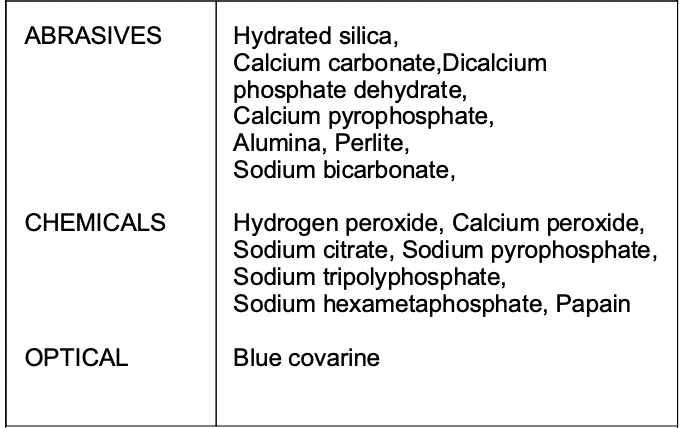
For this particular tube from Darlie, The chemical that causes the whitening effect would mainly be credited to Hydrated Silica. Hydrated Silica is an insoluble abrasive commonly used in toothpaste to physically remove plaque, hence, whitening the teeth. While other chemical agents help sustain the effect. According to the 1Source database, it is a generally safe ingredient with a rating of 4 in the potential risk index. While this is good, why is this toothpaste rated overall an 8 on 1Source? That is because it contains Sodium Fluoride. An ingredient that is quite harmful when not used properly.
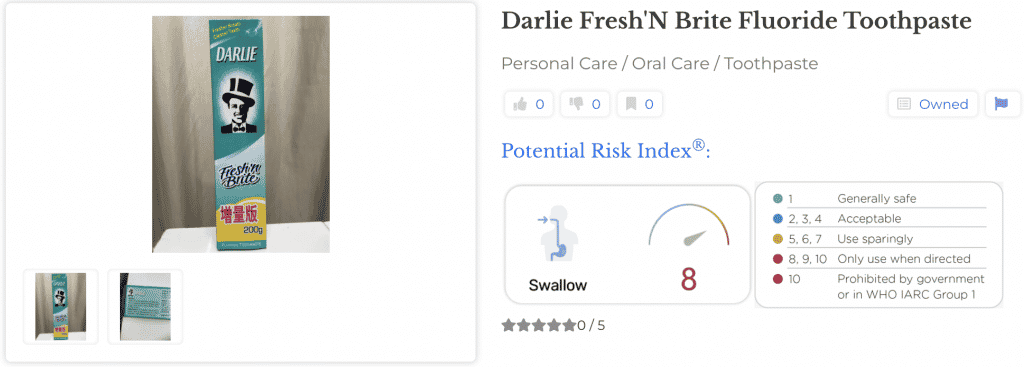

Danger and Dilemma: Fluorine and Sodium Fluoride
Recent findings show that exposure to fluorine causes harm to both animals and workers. Over time it accumulates in the bone and leads to changes and diseases like osteosclerosis. Aside from bone issues, fluoride intake may also lead to neurological and blood disorders (WHO, as cited in 1Source). Effects of constant exposure and accumulation of fluorine may also harm children. Mothers who drank water containing fluorine may lead to children with mottled dental enamel, a.k.a dental fluorosis (WHO IARC Monograph Volume 27 (1982), as cited in 1Source).
Yet, like with many chemicals, the dilemma is that they are also beneficial. Sodium Fluoride is used to prevent tooth decay and bacteria overgrowth.
The following sources express that fluoride used in a certain small amount is excellent and superior to fluoride-free toothpaste. Hence, sodium fluoride is not only common but an essential ingredient.
- “Today almost all toothpastes contain fluoride in one form or the other…Fluoride exerts its caries protective properties in several ways.” (Iqbal et al., 2011)
- “Too much fluoride when used topically can cause a condition known as dental fluorosis…Fluoride toothpaste wins the battle against fluoride-free! In most scenarios, using a fluoride toothpaste is only going to improve your teeth.” (Huang, 2018)
- “Fluoride: The superhero of cavity fighting” (MouthHealthy)
- “Brushing your teeth thoroughly with fluoride toothpaste is one of the most effective ways of preventing tooth decay.” (NHS)
Some are not Convinced
Hence, a herbal toothpaste market for medical reasons or general lifestyle principles exists.
The Punchalee Thai Herb Toothpaste is made of natural ingredients, camphor, borneol, menthol, and cloves, with claims of no preservatives. Compared to ordinary toothpaste, the texture is less smooth and a little grainy, and the flavor is less enjoyable and a bit numbing and foaming. According to the 1Source Potential Risk Index, the toothpaste is rated an acceptable 3.
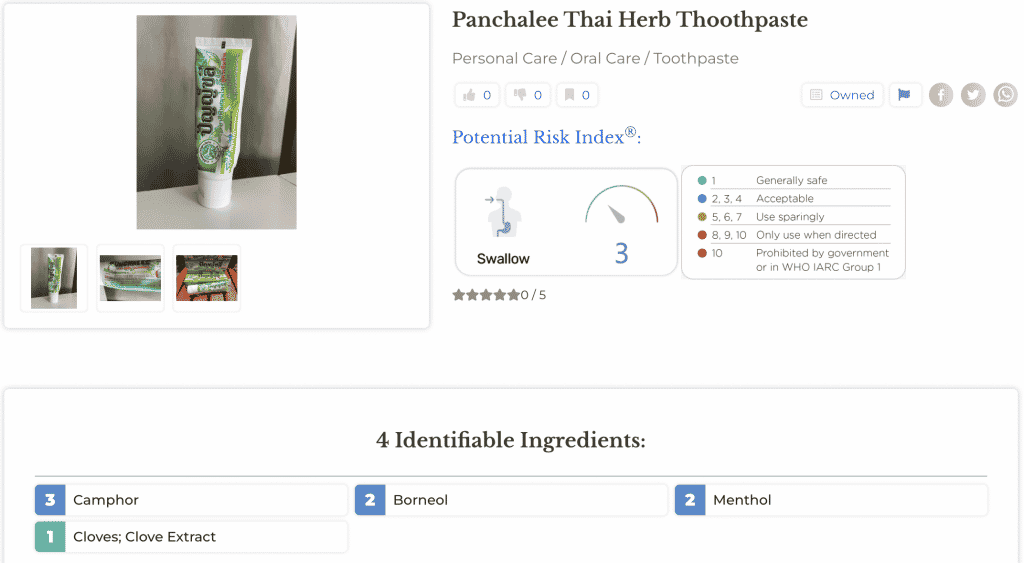
Camphor is an antiseptic (Deshmukh et al., 2017), which means it helps prevent and heal oral conditions for the gums and breath. Borneol, classified as Traditional Chinese Medicine (1Source), has been shown to help prevent dental plaque formation and reduce inflammation of the gums (Stomatology, 2013). Menthol and clove are analgesics that help to relieve pain (1Source) (Shete et al., 2020).
The Punchalee Herb Toothpaste has been in my house since I was a kid, so I can vouch for its popularity among Thais. Herbal toothpaste is generally popular, with many brands sold in supermarkets and pharmacies, and brands like Colgate also producing herbal toothpaste.
If you’re interested in trying this out, you could get this toothpaste in a Thai produce store (e.g., Southwall Road Kowloon City in Hong Kong). Follow the instructions, only use a pea-size! I can guarantee you’ll hate the taste and feel if you put too much.
Verdict
In my opinion, there is no clear winner. I believe that both products are beneficial in their own ways. So to have the best of both worlds, I would use both in my dental routine. Limiting the use of drugstore toothpaste by incorporating herbal toothpaste would help me get the benefits of fluoride and reduce the risk of fluorosis; additionally, it is better at whitening the teeth.
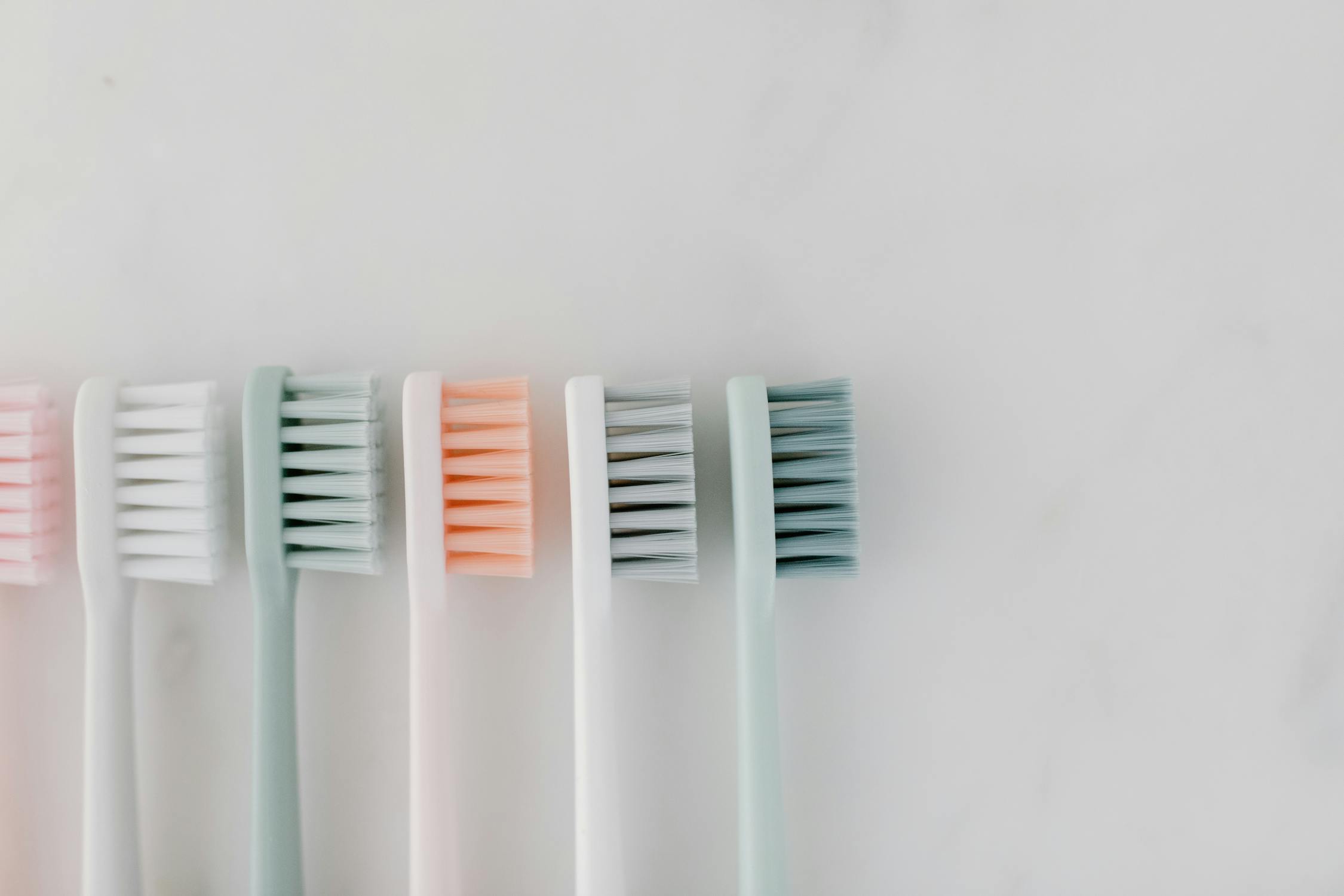
References:
1Source. (2021, March 30). Darlie Fresh’N Brite fluoride toothpaste. https://1source.com/products/darlie-fresh-n-brite
1Source. (2021, February 19). Panchalee Thai herb Thoothpaste. https://1source.com/products/panchalee-thai-herb-thoothpaste
1Source. (n.d.). Borneol. https://1source.com/ingredients/borneol
1Source. (n.d.). Hydrated silica; Amorphous silica. https://1source.com/ingredients/hydrated-silica
1Source. (n.d.). Sodium fluoride. https://1source.com/ingredients/sodium-fluoride
1Source. (n.d.). Menthol. https://1source.com/ingredients/menthol
Deshmukh, P., Shende, V., & Gunde, M. (2017). Formulation and Evaluation of Herbal Toothpaste.
Effect of toothpaste containing bletilla and borneol on dental plaque and gingival inflammation. (2013, November 25). Stomatology. https://www.stomatology.cn/EN/Y2013/V33/I11/761
Fluoride. (n.d.). National Health Service. https://www.nhs.uk/conditions/fluoride/#:~:text=Toothpastes%20containing%201%2C350%20to%201%2C500,at%20least%201%2C000ppm%20fluoride
How fluoride fights cavities – American dental association. (n.d.). MouthHealthy – Oral Health – American Dental Association. https://www.mouthhealthy.org/en/fluoride-superhero
Huang, M. (2022, January 12). Everything you need to know about fluoride vs. fluoride-free toothpaste. Whitehorse Dental. https://whitehorsedental.com.au/everything-about-fluoride-vs-fluoride-free-toothpaste/
Iqbal, K., Asmat, M., Jawed, S., Mushtaque, A., Mohsin, F., Hanif, S., & Sheikh, N. (2011). Role of different ingredients of tooth pastes and mouthwashes in oral health. Jpda, 20(3), 163-170.
Shete, D. D., Patmas, M. A., & Patil, S. P. (2020). Pro-argin technology based formulation of eugenol containing toothpaste. Indian Journal Pharmaceutical Education and Research, 54(2), 323-328.

